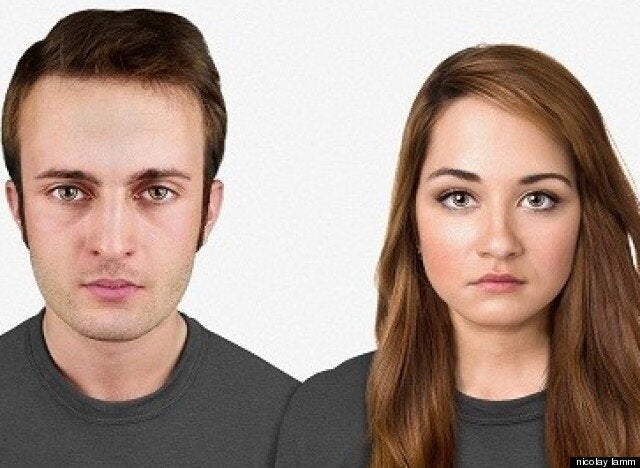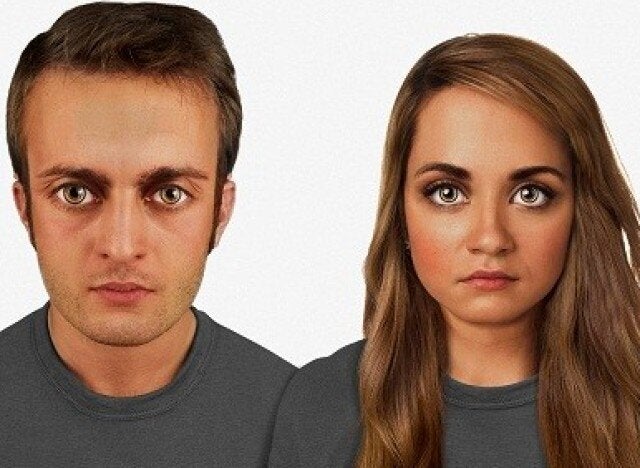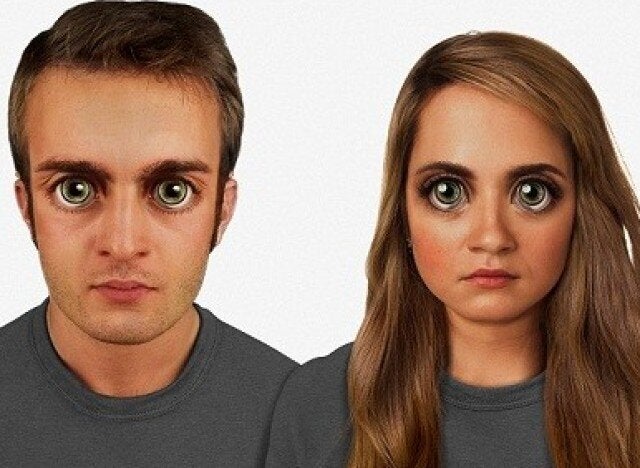Ever imagined what human beings will look like in the future? Well now you don't have to.
Dr. Alan Kwan, an expert in Computational Genomics from Washington University has collaborated with Nickolay Lamm from myvouchercodes.co.uk to create an image of what humankind may look like in 100,000 years time.
And with their grossly distended foreheads, bulging goggle eyes and unnervingly streamlined features, it seems our human descendents are not necessarily lookers.

How we might look in 20,000 years
Our faces have changed almost beyond recognition, an amalgamation of evolution and genetic engineering allowing society to "bend human biology to human needs."
Heads will get bigger to encapsulate larger brains and humans will self-select, through genetic engineering, certain features to look more attractive or to ensure a better quality of life.
Perhaps most startling will be that humans will blink sideways to "protect from cosmic ray effects". We will also choose features considered most beautiful when we have babies, so tomorrow's humans will have faces with “strong, regal lines, straight nose, intense eyes, and placement of facial features that adhere to the golden ratio and left/right perfect symmetry."

How we might look in 60,000 years
Dr Kwan hypothesises that humans will by now have colonised space, and with that in mind, he suggests humans will have larger eyes "in response to the dimmer environment of colonies further from the Sun than Earth." Everyone will have darker skin too, "to alleviate the damaging impact of much more harmful UV radiation outside of the Earth’s protective ozone. He also suggests humans will have "thicker eyelids or a more pronounced superciliary arch to alleviate the effects low or no gravity that disrupt and disorient the eyesight of today’s astronauts on the ISS."

In 100,000 years
That's not the only way advances in technology will have a direct impact on our faces. As he predicts communications lenses will have replaced devices such as Google Glass. He anticipates "contacts and miniature bone-conduction devices implanted above the ear will work in tandem. Bone-conduction devices, with embedded nanochips, will communicate with some external device for communications and entertainment."